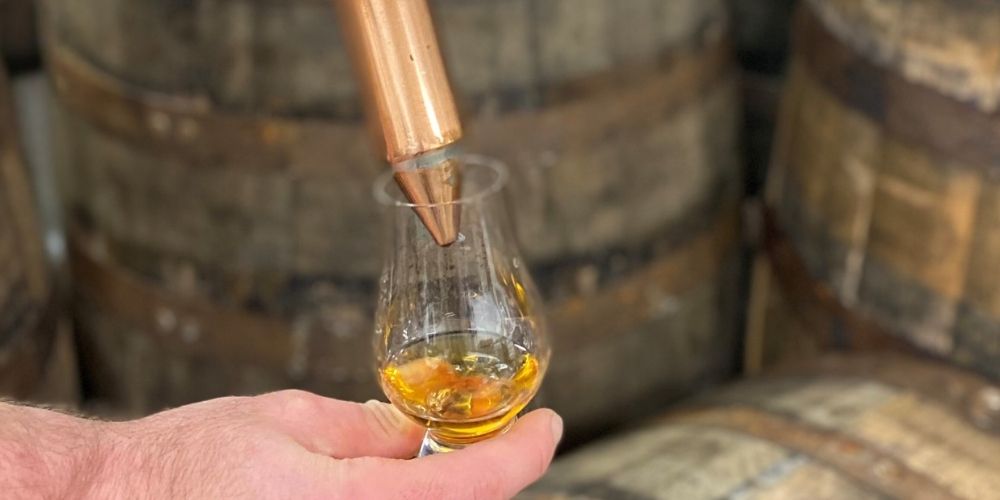
The Art of Aging the Perfect Spirit
The Art of Rum Aging: Balancing Nature, Time, and Expertise
Rum is often seen as the spirit of the tropics but behind that easy image lies one of the most fascinating and complex processes in the world of spirits: aging.
Whether it’s resting in Caribbean heat or maturing slowly in the cool, steady warehouses of the UK, rum’s transformation from raw sugarcane spirit to refined liquid is part science, part craft, and part intuition. It’s this interaction between nature, wood, and human judgement that makes rum aging such an art.
From Raw Spirit to Refined Character
At its heart, rum begins as a distillate from sugarcane - whether that be cane juice, syrup, or molasses. But the moment it enters oak, everything changes. The wood breathes; the spirit expands and contracts with temperature, drawing flavour from deep within the cask creates flavours such as vanilla, caramel, spice, dried fruit, and sometimes a gentle smokiness.
Aging isn’t passive. It’s an active process, shaped by hundreds of choices — which cask, which climate, how long, and when to intervene. The result can be as diverse as rum itself: bold with high esters, elegant and floral, grassy and bright, or rich and decadent.
The Barrel: Where the Magic Happens
Unlike Whisky, there are no rules stipulating the type of oak that can be used for rum maturation.
American oak, particularly ex-Bourbon, remains the most common choice, known for its structure, sweetness, and ability to add layers of vanilla and soft spice. Increasingly, though, producers are experimenting with other types of oak and seasoned casks — ex-sherry, port, or wine — to introduce additional character.
The level of toast or char plays a major role:
- Lightly charred barrels give soft vanilla and honey.
- Heavier chars bring depth, colour, and darker caramelised tones.
Knowing when a spirit has taken enough from its cask, or when to move it to another for finishing, requires training, time, and trust in your palate.

The Climate Conversation: Tropical and Temperate Harmony
Much of rum’s identity comes from where it’s made. In the Caribbean and Latin America, heat and humidity accelerate maturation, drawing the spirit through the wood at speed. That’s what creates those expressive, fruit-forward profiles with notes of banana, molasses, brown sugar, and spice.
In cooler climates like the UK, maturation is slower and more gradual. Evaporation is reduced, and the rum interacts with the wood in a more controlled way. The result tends to be rounder and silkier, with subtle oak influence and beautifully balanced sweetness.
Neither approach is more superior; both are valid expressions of craftsmanship. Tropical rum bursts with immediacy and energy. UK-aged rum offers poise and complexity. Together, they show how environment and expertise combine to shape character.
The Art of Timing
In rum, time is rarely the same as maturity.
Because tropical aging is so intense, a five-year-old Caribbean rum might show the depth of a much older spirit. Conversely, the slower pace of UK maturation means patience is required but also rewarded.
The skill lies in recognising the right moment to act: when to leave a cask alone, when to vat it, when to finish it in another wood, and when to bottle. That instinct comes only with regular tasting and record-keeping which is what we call cask management.
Every cask evolves differently and the last thing you want to do is apply guesswork to the finished spirit.
The Power of Blending and Finishing
Rum blending is where art and science truly meet. It’s about balancing casks, ages, and flavours into something greater than the sum of its parts.
Thanks to Rum’s freedom from large amounts of legislation, it’s diversity is second to none. This means blenders have an incredible palette to work from selecting from casks at different stages, each contributing texture, sweetness, or depth.
Finishing adds another layer of creativity. Sherry, Madeira, or even wine-seasoned casks can elevate rum beautifully in cooler climates, allowing for controlled and elegant flavour integration.
But the line between “enhancing” and “masking” is thin — and that’s where experience makes all the difference.
Want to experiment with finishing or blending your rum? Join one of our hands-on blending days where we’ll help you design liquid with balance, individuality, and story.

Why Expertise Still Matters
Rum doesn’t just need time — it needs attention.
Every choice a maker makes affects the outcome: warehouse position, wood type, rotation, climate control, and tasting frequency. Neglect, even with the best intentions, can undo years of work.
Expert oversight brings structure and calm to an unpredictable process. It’s not about control — it’s about partnership between human and spirit.
Each cask is a living thing, and no two behave the same. Expertise — whether in-house or independent — helps translate that complexity into confidence.
That’s why we want to help cask owners interpret what their rum is telling them and how to make every barrel count. We now offer:
- Sensory & organoleptic evaluations – structured tastings to assess progress.
- Cask management advice – insight on wood, storage, and stock planning.
- Blending & finishing support – creative sessions to develop unique profiles.
- Training & collaboration – building tasting skills and internal expertise.
If you’d like to explore how we can help you better understand your rum — through sensory evaluation, blending insight, or cask management advice — we’d love to talk. Contact us here.